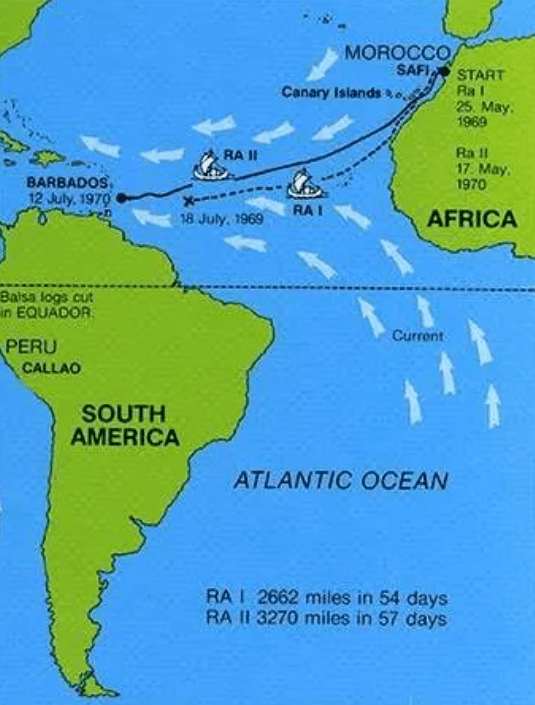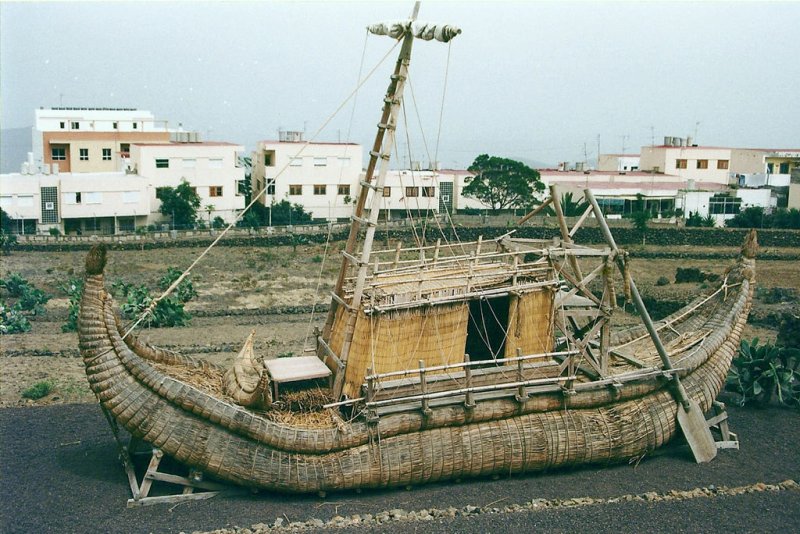On May 17, 1970, Norwegian ethnologist Thor Heyerdahl set sail from Morocco aboard the Ra II, a traditional papyrus boat, to explore the possibility of ancient maritime links between Africa, the Mediterranean, and the Americas.
According to Science News, unlike his earlier attempt with Ra I, which was abandoned after reaching 4,345 kilometers due to structural damage, the Ra II successfully completed its 6,437-kilometer voyage in just 57 days, arriving in Barbados on July 12, 1970.
Papyrus Boat Construction: How Did It Survive the Atlantic Ocean?


The Ra II is a remarkable example of ancient boat-building, crafted using techniques inspired by the reed boats of ancient Egypt. These boats, integral to trade and exploration across the Mediterranean and Red Seas, were renowned for their durability and buoyancy.
The Ra II, built primarily from papyrus reeds, was designed for long voyages. The material was selected for its lightweight yet resilient properties, making it ideal for enduring the rigors of the open ocean.
The boat’s construction was a collaborative effort, bringing together artisans from Egypt as well as skilled craftsmen from Chad, Peru, and several other countries. Each contributed their unique expertise to refine and perfect the design.
Cultural Parallels: Egypt and Indigenous American Civilizations


Heyerdahl’s voyage emphasized cultural similarities between ancient Egypt and Indigenous American civilizations.
The pyramids of ancient Egypt (dating to as early as 2700 BCE) and the step pyramids built by the Olmec and Maya civilizations in Mesoamerica (dating back to 1500 BCE and 2000 BCE, respectively) represent independent developments of monumental architecture tailored to their respective cultural and environmental contexts.
Similarly, ancient Egyptians’ advanced agricultural practices and astronomical knowledge share parallels with techniques developed by Indigenous cultures in America.
Some examples are the Mayan calendar and the Inca Empire’s terraced farming systems (1438–1533 CE), showcasing humanity’s shared ingenuity in addressing challenges of timekeeping and agriculture across different regions.
A Voyage of Interconnected Ingenuity


By retracing the potential maritime routes of ancient civilizations, Heyerdahl’s Ra II expedition highlighted the interconnectedness of human ingenuity across cultures.
This journey reminded the world that ancient civilizations shared knowledge and technologies, reflecting the influence of cross-cultural connections in shaping advancements in seafaring, agriculture, and architecture, among other pivotal aspects of human development, such as trade, astronomy, and engineering.
WE ALSO SAID: Don’t Miss… Ancient Egyptian Inventions That Are Still Used Today



